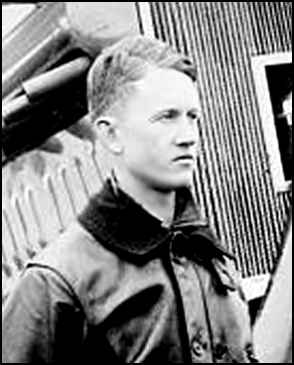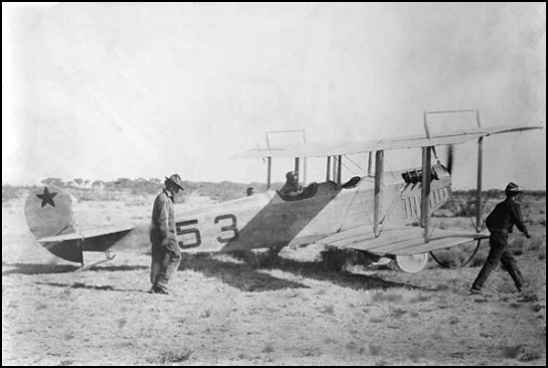

1896-1971 |
 |
 |
|
Library of Congress Collection, 11-9-10 |
 |
|
The 16 officers of the 1st Aero Squadron pose before some of the unit's 77 enlisted men and eight aircraft at San Diego, Calif. in September 1914 From The AVIATION HISTORY Magazine |
|
In Pursuit of Pancho Villa Taking part in Brig. Gen. John J. Pershing 1916 Mexican expedition was a learning experience for the U. S. Army's first air arm-- mainly in respect to its own deficiencies. by Gary Glynn The worried young pilot flew south, deeper into hostile territory, navigating by the stars. Below the fabric-covered wings of his Curtiss JN-3 "Jenny" darkness had already obscured the unfamiliar landscape of northern Mexico. Lieutenant Edgar S. Gorrell had never flown at night before, and his engine was overheating. The flight had been jinxed from the start. Pre-flight preparations consumed more time than expected, so the eight planes of the 1st Aero Squadron had not taken off until late in the afternoon on March 19, 1916. Not long after they flew south from Columbus, New Mexico, Lieutenant Walter G. Kilner had turned back with engine problems. Navigation errors contributed to the squadron's problems. Each plane carried a different type of compass, and the aviators were equipped with poor maps. Only one flier, Lieutenant Townsend F. Dodd, had ever made a night flight before. |
 |
 |
 |
|
Library of Congress Collection, 9-14-07 |
|
MEXICAN PUNITIVE EXPEDITION, 1916 By Capt. Benjamin D. Foulois, Signal Corps, U.S. Army Harold and many other Early Birds are mentioned in this story. You can access it by clicking on: First Aero Squadron |
 |
|
Preparing for a scouting expedition at Casas Grandes, Mexico Mexican-U.S. campaign after Villa, 1916 Library of Congress Collection, 11-9-10 |
|
Col. Carleton G. Chapman died at his home in Fitzgerald, Ga. November 11, 1971. He was taught to fly by
Frank Lahm and soloed April 30, 1913. He was given FAI Certificate No. 241 January 1973, Number 79 |


|